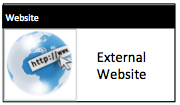SANDEMANIAN CHAPEL - Faraday House, Arcade Royal

-
Description
....It is recorded that on 9 May 1761, it was ‘agreed that Thos. Shepherd should purchase a barn at Kirkby Stephen and have it repaired for a convenient meeting house. ‘James Allen preached for the first time at this new Sandemanian chapel Sunday evening 17 May 1761.’ [3] James was a highly regarded persuasive public speaker and a prolific hymn writer. By 1763, it is documented, that Allen had Sandemanian churches in Gayle with 8 members, at Newby with 30, in Kirkby Lonsdale with 16 and in Kirkby Stephen numbering 30 members. Sandemanian, like Glassite (John Glas followers), was based on early Christianity as practised by the first century Christians adhering to the instructions of Saint Paul and the New Testament. Elders were appointed from the church brethren to make decisions on behalf of the members. They held a weekly agape, or “love feast”, sharing a common meal after their Sunday morning service. Members were vegetarians, believing that partaking of animal blood would taint Christ’s blood of the communion. The washing of feet was practised as the example set by Christ and showed humility. Non-members were welcome except at communion.[4] Today, the building is named Faraday House after the Faraday family connection. Richard Faraday, (1757-1815), married Mary Hastwell of Kirkby Stephen Parish by licence on 20 January 1777.... -
Owner
Upper Eden History Society -
Source
Local (Co-Curate) -
License
What does this mean? Unknown license check permission to reuse
-
Further information
Link: https://www.upperedenhistory.org.uk/bp4.htm
Resource type: Text/Website
Added by: Simon Cotterill
Last modified: 11 months, 3 weeks ago
Viewed: 253 times
Picture Taken: Unknown -
Co-Curate tags








